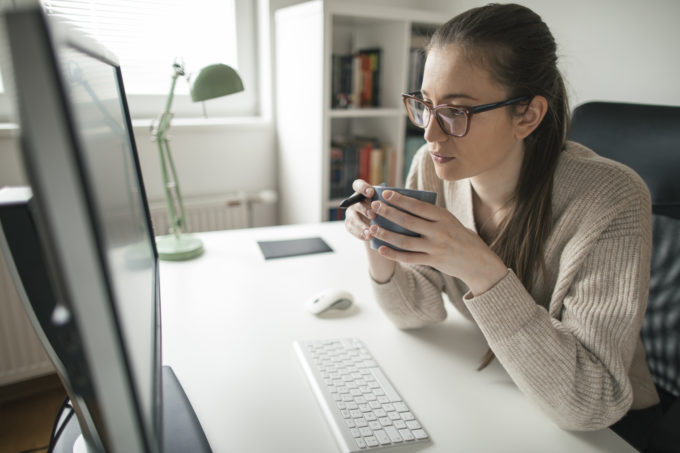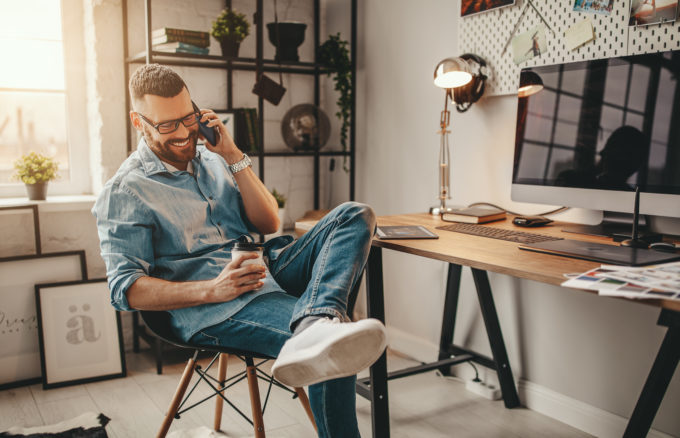A changing corporate culture in the wake of COVID-19
According to Archinect magazine, an estimated 78 percent of architectural professionals are working from home or have been given the option to work from home during the current COVID-19 pandemic.
Some will ease into this new normal pretty easily and for others, it may take some getting used to. But one thing we know for sure is that like any space we design, some thought, and some stylish home-office furnishings can make our home workspaces much more conducive to the work that we do.

Define your space: It’s critical to designate a separate space for work hours devoid of distractions. This can be a spare bedroom, or dedicated space in a living room, kitchen or nook. These thresholds serve as a visual cue to indicate when work starts and finishes. A consistent workspace can also help you be more efficient and productive.
Design your space: No one wants to go to work in a boring space. Making a workspace fun and interesting by sprucing up the environment can help to boost worker output. Incorporate your personality into a space by adding curios of interest. But restraint is a virtue, as the addition of unnecessary distractions might actually keep you from getting tasks fulfilled.
Make it comfortable: Avoid lying on the living room floor with your laptop. Instead, invest in comfortable and ergonomic furniture that will help you focus throughout the day. Sit-to-stand desks can introduce a new level of activity in your day, while a chair with an adjustable seat and backrest can prevent back problems.

There are also steps you can take to influence a successful transition to a remote workforce. These will help with productivity and business continuity:
Share your work schedule: Let your team, co-workers, and family members know your office hours and stick to them. Clear communication will help your team know when you are available and avoid unnecessary interruptions.
Dress for work: Taking a shower and getting dressed for work will help prepare you for the tasks ahead. This helps your mind distinguish between personal time and work.
Eat lunch: It’s easy to lose track of time and miss lunch when you’re busy working. Set an alarm for lunch and take time to eat healthy so you feel energized throughout the day.
Take breaks: Working in an office often means having conversations and spontaneous breaks in common areas or the kitchen. Since these types of breaks don’t always happen at home, it’s important to give yourself five minutes into your day every 30 minutes or a 20-minute break every 1 to 2 hours to help for productivity and focus.
Collaboration: Collaboration is critical and clear strategies to maintain it are essential. For a remote workforce, it’s important for teams to embrace all that technology has to offer. Just because you are not in the same room physically, doesn’t mean you can’t have virtual meetings, chats, and even happy hours to fuel collaboration and comradery.
Workplace design should provide opportunities for employees to better connect with one another and your company’s ethos. In the uncertain era of COVID-19, it’s important to recognize that we’re all in this together, and that we incorporate as many elements into our home offices as possible to maintain that connection. After all, feeling connected to each other is a fundamental human need.

